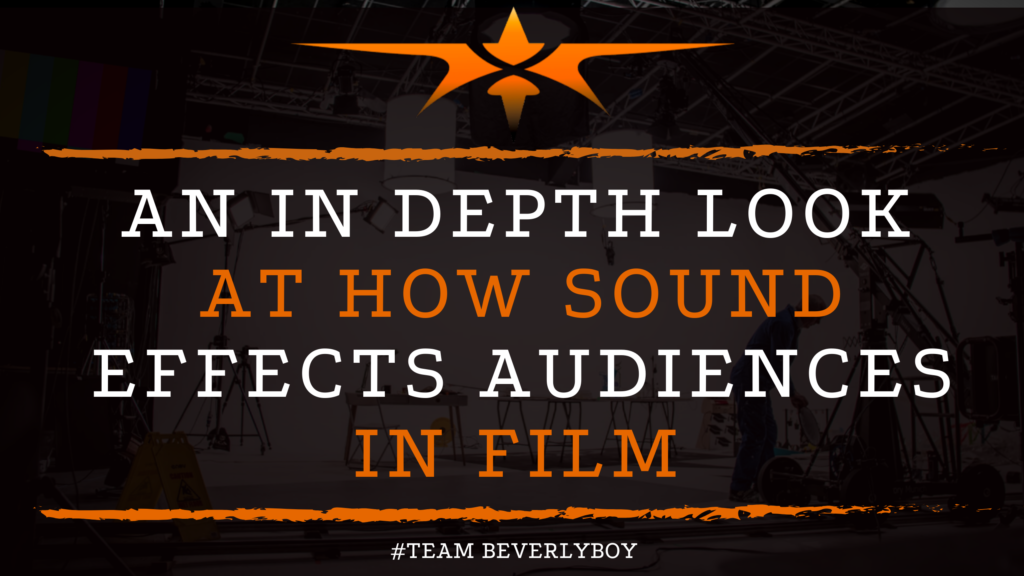An In Depth Look at How Sound Affects Audiences in Film
The use of sound in film can help the filmmaker to achieve a variety of different effects resulting in strong connections to film characters or elements of a scene, deeply emotional experiences, and a variety of other potentially subconscious or conscious reactions. Everything from background music to the natural noises and sounds of a diegesis can impact the audience affecting them in a number of different ways. Figuring out how sound affects audiences in film is essential to understanding exactly how sound design can be used to guide the narrative.

Although it might be easy to overlook the impact that film sound can have on an audience, sound affects audiences in film in a number of ways.
In fact, without sound, films were not nearly as engaging or emotionally impacting as they are with sound.
The true magnificence of sound added to a film is what makes a movie such a profound experience for the audience.
Sounds have Storytelling Power
You’re probably familiar with the way that sounds can be incorporated into a film to drive the theme, focus, or underlying elements of the story home. Sounds have significant storytelling power and can affect the audience in a variety of different ways.
Most commonly, sounds have the power to:
- Change the meaning of a scene.
- Create strong emotional correlations between underlying elements, characters, or key features of a scene.
- Induce various psychological effects among the audience.
How Sound Elicits a Physical Response from the Audience
The use of sounds in film can elicit a physical response from your audience in several different ways. For one, the use of sound systems and advanced technology to maximize sound output for a film can create a sense of power, speed or action.
Loud sounds could potentially surprise an audience while the use of very quiet and hard to hear sounds can result in an audience that has a sense of fear or anxiousness in some instances.
Or, if the sound is particularly low and relaxing, the audience might feel calm, their breathing might slow, and their heart rate could come down.
How Sound Affects the Mental Response from the Audience
Mentally, every audience’s brain is different. The psychological response or mental response of the audience may be elicited through things like repetitive use of sounds. Or the use of sounds that are known to cause a particular reaction among the audience.
For instance, if a film has a loud explosion before every dramatic scene? The audience will soon come to connect the explosion with the upcoming drama.
Psychologically, repeating sounds within a film can help the audience to make a connection between the sound and the impending action or upcoming event.
Likewise, the use of certain sounds can create an immediate emotional response from the audience. As they make the connection with earlier moments of the story.
How Sound Affects the Emotional Response of the Audience

Emotionally, the audience can react in various ways to the sounds that are included within a film. Sounds can elicit many different emotional responses among audiences.
Depending on things like their underlying survival instincts, their understanding of or experience of the world, and their conditioning.
Consider This
For example, audiences might elicit feelings of relaxation at sounds of birds chirping. The ocean slowly rolling in against the shore. And wind chimes gently ding. Likewise, these sounds could create a sense of anxiety.
Or even concern of what’s to come if the waves are crashing hard against the shore. The wind chime is making loud and abrupt noises as if there is a heavy wind blowing. And there are no birds chirping but there is the distant sound of thunder rolling in.
A Means for Filmmakers
The use of sounds to produce the desired emotional response has long been a means for filmmakers to improve their projects. And maximizing the impact that their films have on the audiences.
Some films even mix sound up to play with the emotions of the audience. By incorporating an upbeat or potentially “happy” song into a scene in which the underlying feeling is anything but “happy.”
These types of impactful uses of sound in film can create scenes that are emotionally jarring for the audience and which will be recalled purely for their impact.
Unconventional Use of Sound in Film & Its Impact on Audiences
We’ve examined the many ways that sound affects audiences in film from an emotional, mental, and physical standpoint. But what about some of the less conventional tactics that filmmakers have been known to use?
We’re talking about unconventional use of sound in film. And the ways that sound can be used to affect audience members in a number of potentially “odd” or misrepresented manners. Like – the use of ultrasound frequencies in films.
For Example
The movie Paranormal Activity was said to have incorporated Ultrasound and Infrasonic Frequencies into their production for audiences to hear.
Of course, most audience members had no clue that such sound was incorporated into the film, but how did this impact the audience? How do Ultrasonic and infrasonic frequencies affect audiences?
The Impact
These frequencies are actually known to interfere with the perceptions and the emotions of those who hear them. Thus, the use of such unconventional frequencies in filmmaking can result in viewers feeling discomfort and fear. While altering the audience perception of the sound.
While most sound systems don’t go under 20Hz which would be required for infrasonic frequencies. In the event that an audience were to watch a film in a theater or other location.
With which the frequencies of the sound system would accommodate the ultralow frequencies used, they would likely feel sick, scared or both as a result.
In Summation
As you can see, different techniques to incorporate sound into films can result in different outcomes and reactions among audiences. Sound effects audiences in film in a variety of ways leading to altered emotions, physical being, and mental balance.
Thus a combination of sound and visual imagery in filmmaking has extreme power to connect with the audience on a deeply emotional, physical, and psychological level.

